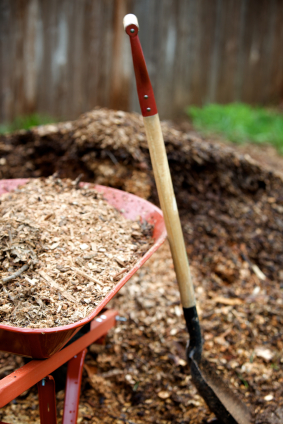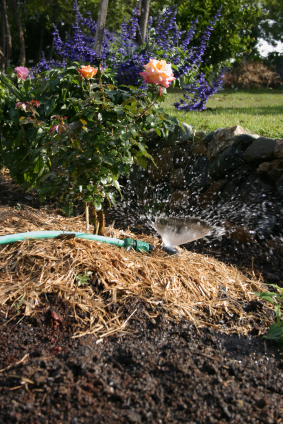The In's and Out's of Organic Mulching
As you may already know, mulching is a great way to maintain soil temperature and conserve moisture. But did you know that mulching is an excellent way to add additional nutrients, lower pH, and even help with weed control in your garden? And that all this can be done organically? It can, and here are some ways you can get your mulch to start working for you.
add additional nutrients, lower pH, and even help with weed control in your garden? And that all this can be done organically? It can, and here are some ways you can get your mulch to start working for you.
Let’s first start out by explaining what is meant by organic mulch. Essentially, any mixture compromised of dead plant material. You have your choice between natural forms like straw, hay, dry lawn clippings, pine needles, leaves and bark or processed forms such as cardboard and non colored newspaper. Both forms have their specific benefits, so pick the type of mulch you need to fit your particular need.
Organic mulches, particularly those applied in thick layers, help moderate the soil temperatures. Acting as insulators, mulches keep the soil warmer during cool weather and cooler during the warm months of the year. You want to apply mulch around established plants in the garden in early fall, when the soil is still warm. This will help keep your tender plants safe from frost should there be a cold winter.
As mentioned earlier, moisture conservation is one of the primary uses for mulch. Organic materials such as straw, hay, and dried grass clippings are great choices for this use because they soak up any excess water that the soil can not immediately absorb. Materials such as leaves, cardboard and newspaper can act as a barrier and actually make it harder for water to reach the soil, especially during heavy rains when runoff is common, so you will want to steer away from those.
 Weed control is another desired effect of mulch. It is common practice to lay bark dust or bark chips in your garden in a 2-3” thick layer to help prevent weeds from growing, which also give a nice appearance. However, bark is not your only option; straw, dried grass clippings, and leaves can also be used. Preparing a walkway with a thick layer of straw over a layer of newspaper is an excellent option in both your yard and your garden. You can also vary your plantings to use living mulch, planting spinach, kale, lettuce and radishes in between your rows of carrots, corn, beets, onions or cabbage.
Weed control is another desired effect of mulch. It is common practice to lay bark dust or bark chips in your garden in a 2-3” thick layer to help prevent weeds from growing, which also give a nice appearance. However, bark is not your only option; straw, dried grass clippings, and leaves can also be used. Preparing a walkway with a thick layer of straw over a layer of newspaper is an excellent option in both your yard and your garden. You can also vary your plantings to use living mulch, planting spinach, kale, lettuce and radishes in between your rows of carrots, corn, beets, onions or cabbage.
Once the mulch has served its purpose, you can rake it into the soil to add organic content to the soil. The mulch will help provide food for the soil-dwelling organisms and eventually become part of the soil. If you are leaning towards using pine needles to mulch, you should know that they are a great way to lower the pH of your soil — so be sure that is the effect you want before mixing them into the soil.
Also, one of my personal favorite mulches is compost. In certain parts of the country, like Oregon, you can buy compost by the yard. Talk about a mulch that enriches your soil! If you don't have access to cheap compost, you can always make it yourself with a backyard composter. Happy mulching!






